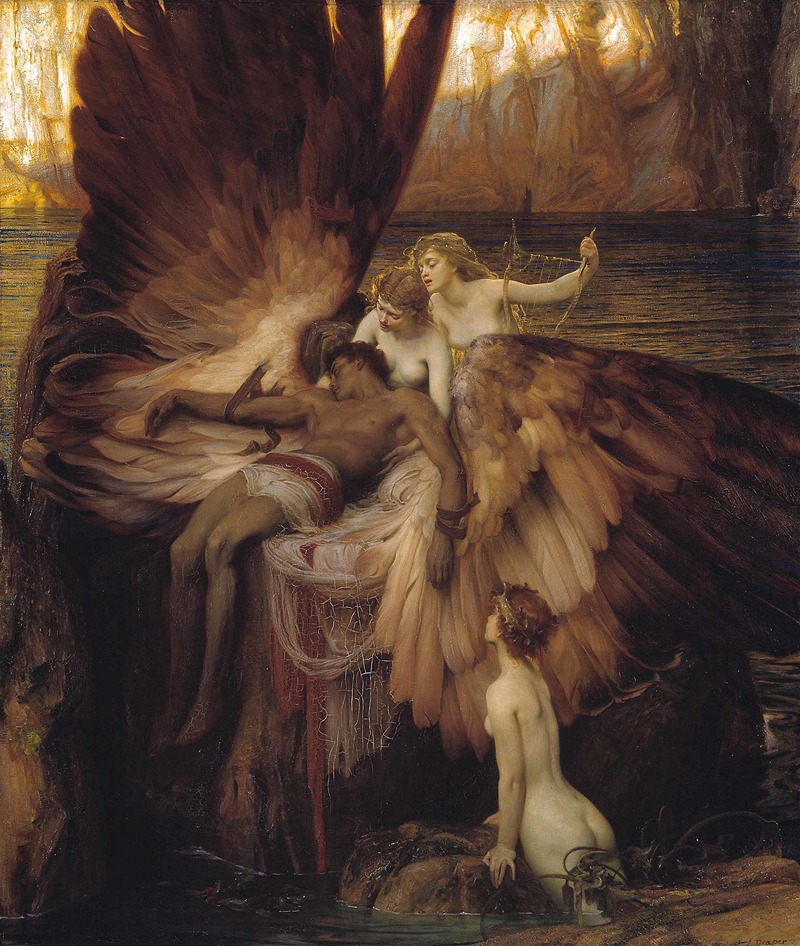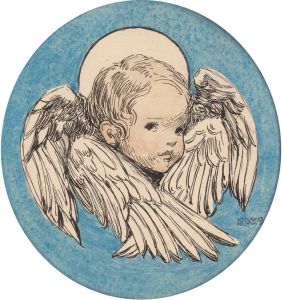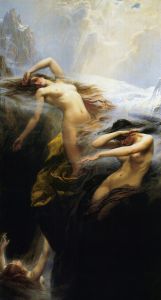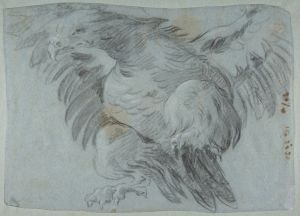
The Lament for Icarus
A hand-painted replica of Herbert James Draper’s masterpiece The Lament for Icarus, meticulously crafted by professional artists to capture the true essence of the original. Each piece is created with museum-quality canvas and rare mineral pigments, carefully painted by experienced artists with delicate brushstrokes and rich, layered colors to perfectly recreate the texture of the original artwork. Unlike machine-printed reproductions, this hand-painted version brings the painting to life, infused with the artist’s emotions and skill in every stroke. Whether for personal collection or home decoration, it instantly elevates the artistic atmosphere of any space.
"The Lament for Icarus" is a renowned painting by the British artist Herbert James Draper, completed in 1898. Draper was a prominent figure in the late Victorian and Edwardian art scene, known for his mythological and allegorical subjects. This particular work is one of his most celebrated pieces and exemplifies his skill in capturing the human form and emotion.
The painting depicts the aftermath of the Greek myth of Icarus, the son of Daedalus, who flew too close to the sun with wings made of feathers and wax. The heat of the sun melted the wax, causing Icarus to fall into the sea and drown. Draper's interpretation focuses on the moment after Icarus's fall, highlighting the tragedy and pathos of the myth.
In "The Lament for Icarus," Draper presents the lifeless body of Icarus lying on a rocky shore, surrounded by mourning sea nymphs. The nymphs, with their ethereal beauty and flowing hair, are depicted in various poses of grief and lamentation, emphasizing the sorrowful mood of the scene. Draper's use of light and shadow, along with his attention to anatomical detail, brings a dramatic intensity to the composition.
The painting is notable for its rich color palette and the way Draper contrasts the pale, lifeless body of Icarus with the vibrant hues of the nymphs and the surrounding landscape. The golden tones of the setting sun in the background add a poignant touch, symbolizing both the cause of Icarus's downfall and the end of his brief flight.
"The Lament for Icarus" was exhibited at the Royal Academy in London in 1898, where it received critical acclaim. It is considered a masterpiece of the late 19th-century British art and is often cited as a prime example of Draper's ability to blend classical themes with a romantic sensibility. The painting reflects the Victorian fascination with classical mythology and the era's interest in exploring themes of hubris, ambition, and the consequences of human folly.
Today, "The Lament for Icarus" is housed in the Tate Britain, where it continues to be admired by art enthusiasts and scholars alike. The painting remains a significant work in the study of mythological art and serves as a testament to Draper's artistic legacy. Through its evocative imagery and emotional depth, the painting invites viewers to reflect on the timeless themes of aspiration and loss, making it a lasting contribution to the world of art.


















